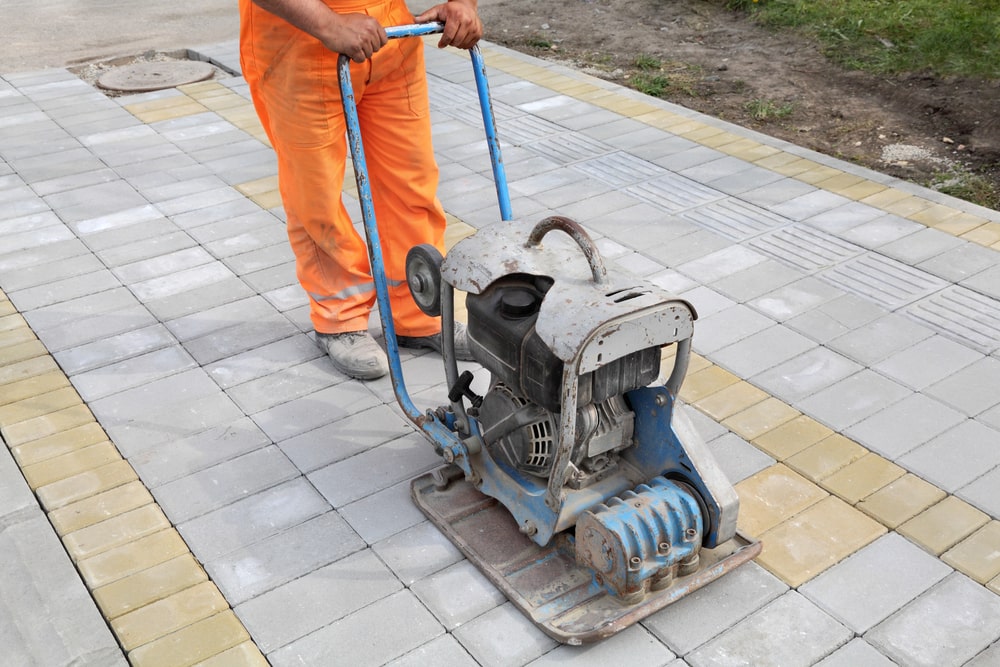
If you live in Columbus, OH, and rely on winter traction, it pays to pick products that protect surfaces instead of destroying them. As a local concrete company, we see damage every spring from harsh salts, missed sealing, or using the wrong chemistry on decorative finishes. This guide explains what to use, what to skip, and how to schedule sealing so your driveway, steps, and patio survive our freeze cycles.
Why deicers damage concrete in Columbus, OH
Deicers lower the freeze point of water, which helps with grip but also drives moisture deeper into pores. When temperatures swing above and below freezing, that trapped water expands and scales the surface. On driveways along shaded streets in Clintonville and Worthington, the cycle repeats all day, multiplying the effect. A concrete company builds in defenses like air entrainment and proper curing, but product choice and timing still make or break durability.
Best and worst deicers for flatwork
Not all bags in the aisle act the same. Here is a practical short list.
- Calcium magnesium acetate. Often the gentlest option on cured concrete and landscaping. Works to about 20°F. Costs more per bag, but you use less. Ideal for driveways and steps you want to preserve.
- Calcium chloride. Effective to lower temps and usually less aggressive than rock salt. Can feel oily and leaves residue that needs rinsing during thaws. Use sparingly on stamped or colored surfaces.
- Magnesium chloride. Similar to calcium chloride with lower working temperatures. Watch for pet sensitivity and potential metal corrosion near railings.
- Sodium chloride. Common rock salt. Cheap and effective, but rough on surfaces, plants, and metal. It also encourages refreeze lines where meltwater runs and cools again. We advise avoiding it on residential flatwork.
- Urea and blends. Gentler on concrete but limited ice melting power. Works best as a supplement, not a primary deicer.
Tip from a concrete company perspective. Buy smaller bags of the right product and keep it dry in sealed containers. Damp salt clumps and pushes you to over apply, which increases damage risk.
The right way to apply deicers
More is not better. Scatter a light, even dose and give it time to work before reapplying. Use a handheld spreader for steps and short walks so piles do not form at landings. After storms, sweep leftover pellets into a bucket and store. During a midwinter thaw in Columbus, OH, hose down high traffic tire paths to remove residues. This reduces the brine that soaks into pores and shortens sealer life.
Traction alternatives for the first winter
Fresh flatwork should avoid chemical deicers through its first winter whenever possible. For traction, use washed sand or non clumping kitty litter. Sweep it up after each event. Your concrete company should leave a care card that reminds everyone in the home to skip salts on new slabs.
Choosing a sealer that fits our climate and finish
Sealers fall into two broad families. Penetrating sealers like silane or siloxane soak in and create a water repellent, breathable barrier. Film forming sealers create a thin layer on top that can deepen color and add gloss.
- Exterior broom finish driveways and sidewalks. Choose penetrating silane or siloxane. They resist water and deicer brine without becoming slick. Expect a natural look.
- Stamped or stained patios. Many Columbus, OH homeowners prefer a two step approach. First a penetrating treatment for moisture control, then a thin decorative film for color pop. Keep the film breathable and avoid heavy build that can peel.
- Polished interiors or garage coatings. These usually have their own systems. Always match products to the manufacturer’s maintenance schedule.
A concrete company should document product names, solids content, and recoat timing so you can keep results consistent year to year.
Sealing schedule that actually works here
Plan around our seasons. Do a primary application in early fall before hard freezes. This gives time for proper cure of the sealer itself and protects through winter. In spring, inspect and touch up high wear zones like driveway tire tracks and the bottom steps that collect brine. In neighborhoods with heavy tree cover such as Upper Arlington and Bexley, moss and pollen can reduce performance, so add a light clean before any spring touch up.
Prep makes or breaks sealer performance
Sealers need clean, dry, open pores. Start with a low pressure wash and a neutral cleaner to lift oils. Rinse well and let the slab dry for at least 24 hours of good weather. For driveways that saw heavy rock salt last winter, use a mild acid wash per label to open pores, then neutralize and rinse. A concrete company will test a small, inconspicuous spot to confirm absorption and appearance before treating the whole area.
How to protect decorative finishes
Stamped and colored concrete looks great but needs tailored care. Avoid harsh metal shovels on edges and use plastic blades instead. Pick deicers rated safe for decorative surfaces. Keep film forming sealers thin and reapply more often rather than laying heavy coats. On patios around German Village where shade slows drying, add breathable products only and delay treatment until a dry stretch is forecast.
What to do after a tough winter
If scaling appears, stop salts immediately and switch to sand. Clean the surface once temperatures stabilize. Light scaling can often be stabilized with patch mortars and a penetrating treatment. If the surface is deeply pitted or the base has failed, talk with a concrete company about resurfacing overlays or replacement. Document what products were used through winter to avoid repeating the same pattern.
Quick reference cheat sheet
- First winter. No chemical deicers if possible. Sand for traction.
- Long term. Prefer calcium magnesium acetate or calcium chloride, applied lightly.
- Sealers. Penetrating for traction areas. Thin films for decorative color.
- Timing. Full seal in fall, inspect and touch up in spring.
- Cleanups. Sweep excess pellets and rinse brine during thaws.
- Records. Keep product labels and dates in a simple home log.
CTA: Need a plan for your specific surface. Get a same week quote from our Concrete company in Columbus, OH.
Next post: Ready to stop puddles and refreeze lines. Read: Drainage first concrete design for Columbus homes.
FAQs
Which deicer is safest for my driveway?
Calcium magnesium acetate is typically the gentlest choice for cured residential flatwork in Columbus, OH when applied lightly.
How often should I reseal a driveway?
Every 2 to 3 years for most surfaces, with spring touch ups on high traffic tire paths after heavy winters.
Can I seal over last year’s sealer?
Only if it is compatible and the surface is clean and dry. When in doubt, test a small area or ask a concrete company to evaluate adhesion.
